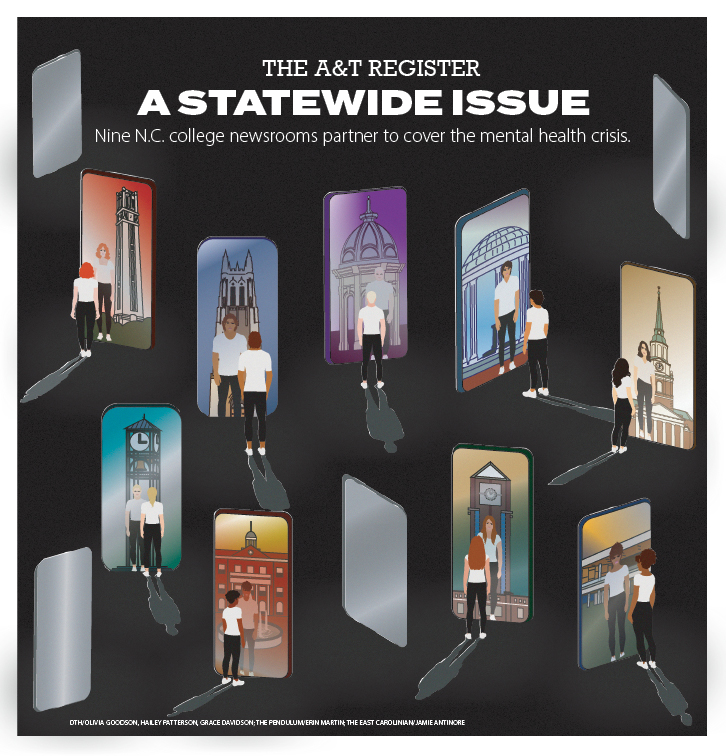Many factors can affect a college student’s mental health — like adjusting to a new schedule, stressing about career plans after graduation, or struggling to find a community when entering campus.
Another concern that can affect the mental well-being of students at historically Black colleges and universities stems from having to pay back large amounts of student loans. The increasing tuition rates on these campuses further exacerbate the existing issue.
According to a 2013 study done by the Fredrick D. Patterson Research Institute, 80 percent of HBCU students borrowed federal loans compared to 55 percent of their non-HBCU peers.
Even though HBCUs can offer more affordable access to higher education than non-HBCU schools, financing college often involves students and families taking on loans. When coupled with sporadic increases in out-of-state tuition rates, the financial burden can weigh heavily on some families.
Funding changes, instructor wages, building upgrades and rising operating expenditures all impact these tuition rates. Every university has its own set of motivations.
For the 2013-14 school year, N.C. A&T’s tuition and required fees for an out-of-state student were $15,550. Entering the 2023-24 school year, that number rose to $20,243. Over 10 years, the cost of attendance at the university — the nation’s largest public HBCU — rose by about 30 percent.
Underclassmen like Daiyana Brooks, a sophomore computer science student, say that it is hard enough to adapt to a new environment and that the tuition increase adds stress.
“The financial side of college can get you down, and make you feel bad about yourself and your overall experience,” Brooks said. “You have to come up with ways to financially support yourself to make sure you have enough money to even be in college.”
The issue of tuition increases is not solely an N.C. A&T problem. At Howard University, tuition has steadily risen over the past decade.
In 2013, Howard University had a tuition of around $23,000. By 2023, that number rose above $32,000.
Over the past decade, tuition increased at Howard, a notable private school, by over 39 percent. Underclassmen like biology student Courtney Copeland wonder where the money goes when the structure of the dormitories still has issues.
“Over winter break, many units in my building flooded and many students had to be moved to different rooms and buildings,” Copeland said. “I think Howard raising our tuition affects most people considering it was already high, and it’s frustrating to see how many issues we’ve had this year, and I wonder what that money is going towards.”
At Spelman College, another private HBCU, the tuition and fees increase is around 22 percent over ten years. Senior journalism student Kylar Dee said that having to take out more student loans to pay for her last semester hinders her postgraduate plans.
“As I get close to the finish line, not only am I having to look for a great opportunity after school, but I’m also looking for ways to pay off high debt in student loans,” Dee said. “It adds extra stress on me.”
Economic Intuition
Jeffrey Edwards, an economics professor at N.C. A&T, emphasizes the importance of survey analysis and cohort studies to gain insights into tuition changes’ and their mental health impact.
Edwards said effectively communicating research findings, especially those related to the financial implications of inflation, is crucial for informed decision-making among university administrators.
“Conducting a survey analysis, a cohort of students, and having students understand the market price, they would learn that they are getting off pretty cheap compared to other schools,” he said. “The lack of communication from the university administration is simply why students are not aware of what will happen in the real world: you make more money due to inflation.”
N.C. A&T presents financial literacy events
Financial Aid
Sharon Ozel, a medical and mental health case manager at N.C. A&T, spoke about the profound challenges students face when navigating financial aid and tuition-related stressors.
“Students are more stressed and overwhelmed dealing with financial aid, and that also stems from the stress of their parents when they have to accumulate funds unprepared,” Ozel said.
Her observations underscore the real-world impact of financial aid decisions on students’ academic journeys, emphasizing the need for comprehensive support services.
“The services the counseling center offers are limited — there are no resources to deal with tuition or tuition increase,” Ozel said.
Addressing Mental Health in the Black Community
The rising cost of college heightens financial strain, potentially impeding access to education.
Recognizing that strain’s impact on mental health is crucial, as stress related to financial constraints can increase the risk of anxiety and other mental health issues.
It is essential to consider individual differences and broader socioeconomic aspects when assessing the impact financial factors have on mental health within the Black community. As a part of addressing that impact, universities must prioritize transparent communication with students about the reasons behind tuition increases.
Engaging in open dialogue can help alleviate the mental burden on students by providing a clearer understanding of the financial landscape and future implications.
This includes acknowledging the factors contributing to rising costs like changes in funding, instructor wages, building upgrades and operating expenditures.
Furthermore, institutions need to invest in support services that address the mental health challenges arising from financial strain.



